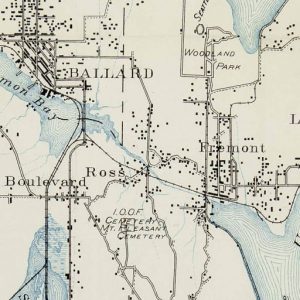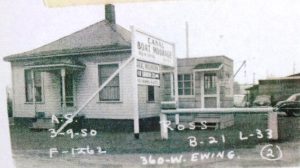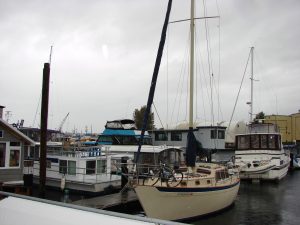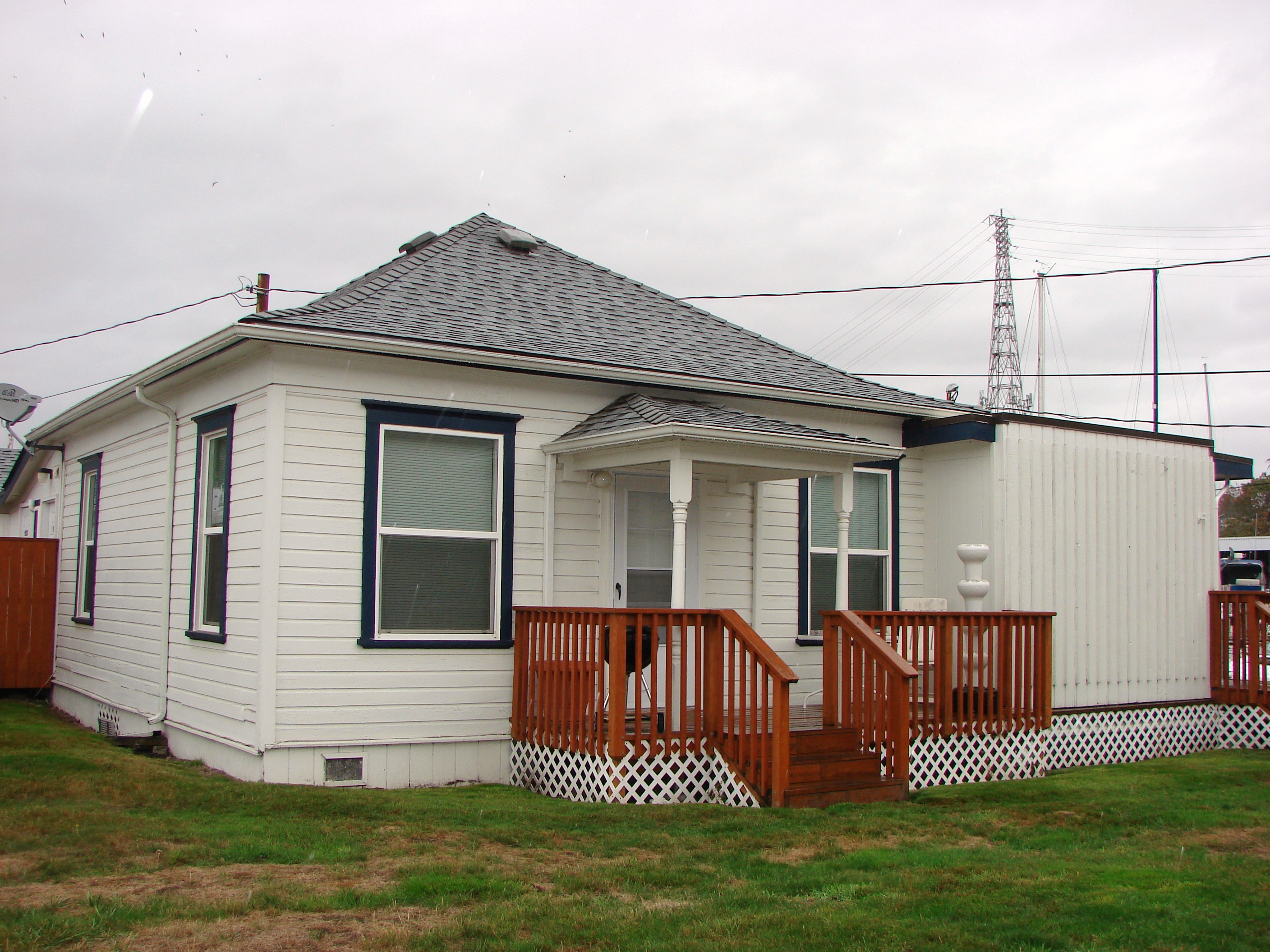When the Lake Washington Ship Canal was constructed in 1911-1917, people hoped that the canal would benefit Seattle’s business environment. It was difficult to foresee, however, all that might happen, and what would be the actual impact of the canal work. In the Fremont neighborhood of Seattle, Waldo B. Staples found that the new, deeper and wider canal caused problems at first, but then unexpectedly the canal created a new means of livelihood for him.
Finding a home in Fremont

Waldo B. Staples came from Iowa in 1883 and worked in lumber mills in Seattle. He lived in Fremont and worked in wood products industries such as Western Lumber at South Lake Union, and Bryant Lumber & Shingle Mill, located close to the present site of the Fremont Bridge.
In 1908 at age 45, Waldo started Canal Manufacturing Company at 360 West Ewing Street, on the south side of the little hand-dug canal which had formerly been called Ross Creek. Now considered part of the Queen Anne neighborhood, in those days the north, flat area of Queen Anne next to the canal was part of Ross and Fremont.
The community of Ross was the former land claim of John Ross and was west of Fremont, between 3rd to 6th Avenues NW on both sides of Ross Creek. Ross and Fremont each had a post office and a rail stop on the Seattle, Lake Shore & Eastern Railroad.
Life along the canal
In his work, Waldo Staples began to specialize in wood products for boatbuilding because his house at 360 West Ewing Street was near to the canal. He also planted an extensive garden for his family’s use.

One day in March 1914, during construction of the ship canal, there was a dam break and water from Lake Union flooded the construction area. The water of the still-unfinished canal came up over Waldo’s backyard potato patch and formed a cove (a small bay.) The cove then became Waldo Staples’ means of livelihood. Waldo’s flooded potato patch became a marina, and Waldo began deriving income from storing and repairing boats.
Today Waldo B. Staples’ original house is still used as the office of Canal Marina. While some think of the ship canal as a conduit for recreational boating, actually the canal has been the means of expansion of maritime and industrial businesses in Ballard, Fremont and north Queen Anne. The Lake Washington Ship Canal has helped to grow the economy of Seattle. The centennial of the Lake Washington Ship Canal was commemorated in 2016-2017.
Sources:

Census and city directory listings for Waldo B. Staples.
Original property records for 360 West Ewing Street, Puget Sound Regional Archives, Bellevue, WA.
“Seattle Beginnings: Ross Post Office Opens on July 30, 1888.” HistoryLink Essay #494 by Greg Lange, 1998.
“Waldo B. Staples,” Seattle Daily Times, June 30, 1935, page 1.

